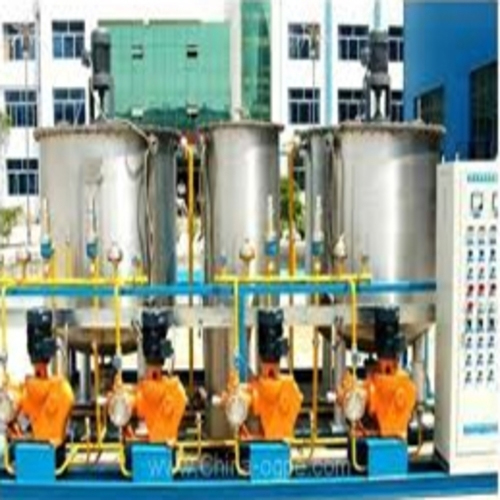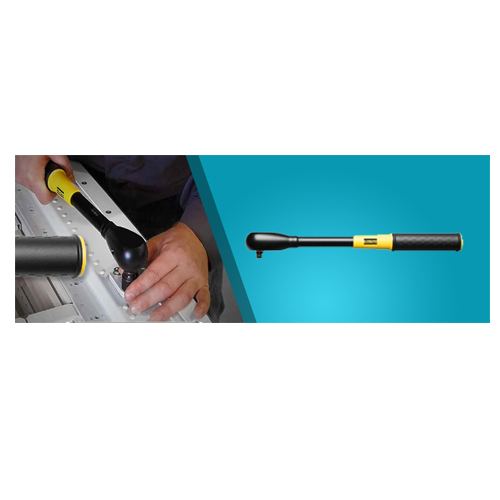Schedule a Call Back
Tidal Energy: The barrier is not mechanical
 Technical Articles
Technical Articles- May 29,14
The barrier to tidal energy is not a mechanical one according to Altra

The cost of energy generated by tidal power generation is, at this stage of device development, still more expensive than that offered by offshore and onshore wind, and solar arrays in sunnier climes; however, fossil fuels will not last forever and investment is still going into accessing tidal power, one of the most reliable and predictable of renewable energy sources.
Anthony George, from the Heavy Duty Clutch and Brake (HDCB) Division of Altra Industrial Motion has been involved in engineering a number of offshore energy projects and offers some analysis on the real-world viability of these schemes.
One thing is for sure, the cost of energy is going up and as fossil fuel based resources dwindle then renewables will become ever more important. If renewables are to play a major part in the energy generation map of our medium-term future, then they have to be reliable. If they are not reliable, then costs go up and efficiency drops, which compounds the issue.

Tidal power sources look like a great alternative to the vast costs of nuclear power and the visual impact of large scale onshore wind and solar projects. While some significant players, apparently well advanced with the development of their prototype devices, have seemingly disappeared, several major global engineering companies have recently invested in marine technologies.
Kawasaki and Hyundai for example have both invested in their own designs; the UK is clearly a leading centre for development as Siemens bought UK based Marine Current Turbines (MCT) in 2012 and Alstom recently purchased Tidal Generation Limited from Rolls-Royce. Policy driven or not, they are certainly investing in the technology. Island nations with strong (and accessible) tidal currents obviously have a vested interest.
As the cost of mainstream energy rises, so tidal installations become more financially attractive, and while government policies are retained that promote the installation of alternative power sources, either by raising feed-in tariffs or implementing schemes such as the Renewables Obligation (RO) scheme designed to reduce carbon emissions, then there is an incentive, but still no great market pull: Progress is largely driven by the technological improvements of the device developers.

This is a medium to long-term investment for the utility companies, so it is falling to engineering companies to lead the way; projects such as the offshore technology initiative in Orkney, Scotland, certainly help. Altra has worked on several turbine brake-system designs, ultimately destined for early arrays that are being funded by utility companies, but they remain beta sites rather than full-scale commercial farms. Reliability and robustness are critical and, despite the advanced site modelling techniques employed prior to installation, many companies are finding that conditions out in the open sea are harsher than predicted. The typical products Altra supplies to this industry, such as torque-limiting clutches and safety brakes, were designed-in with the primary requirements being to bring the turbine's rotor to a controlled stop or hold it during installation or for maintenance purposes. Additionally, they perform an emergency stop function preventing over-speed of the rotor should flow velocity exceed safe levels, or in the event of grid loss (and a subsequent drop in generator load). Although there is no dominant turbine technology at this early stage, a number of the furthest developed designs on test are similar in principle to wind turbines, employing a traditional nacelle and horizontal-axis rotor arrangement. Different configurations are being tested with twin or single rotors; some are fixed to the seabed others attached to floating rigs. Methods of power transfer include pumped hydraulics as well as on-board generators with the generation equipment and gearing contained within the nacelle.
Viability of an installation site is dependent on many factors and not limited to the suitability of the water flow rates; sea depth, proximity to population centres, infrastructure support and transport to site and, crucially, installation costs. All of these factors add to a Levelised Cost of Energy model ('LCOE' - the price at which electricity is generated taking into account many of the contributory cost variables) against which viability of different devices may be compared.

The basic principles of most undersea turbine designs are relatively familiar, based as they are on proven technologies from within the wind turbine industry. Factor in the operating environment and everything becomes an order of magnitude more complicated: Installation requirements, accessibility, dynamic sealing, wet connection of power lines - the huge mechanical forces on the devices. Many of the leading developers have experienced blade failures of some kind in the development and testing phase, so scale-up and full size testing are taking their time to progress into full commercial size installations.
For the associated brake systems, Altra can supply a range of dry and 'wet' solutions; Twiflex caliper disc brakes traditionally work in the dry environment of a sealed nacelle, but may be developed for use fully exposed to seawater. Wichita multi-plate clutch designs may be configured to act as a torque limiting device, protecting the drive train from torque spikes induced by extreme weather conditions while similar 'wet' brake designs utilise oil-in-shear technology to develop torque. Apart from being inherently fully sealed, the great advantage afforded by these units is the avoidance of dry friction rubbing, so wear (and the consequent creation of dust and debris) is negligible. This is essential in order to achieve the 20-year or more operating life requirements that customers are requesting. Long service periods of five years or more are also typical, since the cost of physically visiting underwater installations (or retrieving them to a suitable dock) is substantial.
Floating devices have an advantage here, but still require the same technology to control peak loads and ensure maintenance is possible in controlled conditions. The brakes hold the rotor during installation or maintenance, or 'park' the turbine to prevent an over-speed situation in the event of predicted periods of high flow velocity. They are further rated to bring the rotor to a controlled stop in an emergency.
The brakes deliver a fail-to-safe operation that relies on a spring applied and, in most cases, hydraulically released principle; the electro- hydraulic power pack is tied into the system plc controller, if the unit loses grid connection or speed control (or even if the control system loses power) the brakes apply in a controlled many to safely stop the turbine without inducing excess loads in the drive.
Currently, the largest 'wet' brake solutions are capable of providing dynamic braking torque up to 3 MNm. As indications suggest turbines will need to be rated at 2-3 MW to become commercially competitive it is inevitable sizes will increase and this technology - proven at the 1MW scale - will be there to address this future demand.
(Altra Industrial Motion Corp., through its subsidiaries, is a leading global designer, producer and marketer of a wide range of electromechanical power transmission products. The company brings together strong brands covering over 40 product lines with production facilities in eleven countries. Altra's leading brands include Ameridrives Couplings, Bauer Gear Motor, Bibby Turboflex, Boston Gear, Delroyd Worm Gear, Formsprag Clutch, Huco, Industrial Clutch, Inertia Dynamics, Kilian Manufacturing, Lamiflex Couplings, Marland Clutch, Matrix, Nuttall Gear, Stieber Clutch, Svendborg Brakes, TB Wood's, Twiflex, Warner Electric, Warner Linear and Wichita Clutch.)
David Brooksbank, Director of Marketing, Altra Industrial Motion. Email: david.brooksbank@altramotion.com
Related Products

Ozone System
Omnicorp Environs & Infratech Co offers a wide range of ozone systems.

SWR ’Slipping’ Wrenches
Reliable
Trade Links offers a wide range of SWR ’slipping’ wrenches.

Gripping Systems – Rgg
Schunk Intec India Pvt Ltd offers a wide range of Gripping Systems – RGG - cleaning
device with shank interface.

















